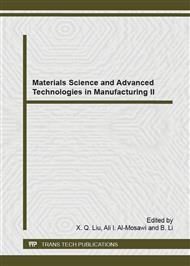p.249
p.254
p.260
p.265
p.270
p.275
p.279
p.284
p.295
Production Process and Heat Transfer Performance of 10/316 Clad Tube
Abstract:
A new preparation technique of carbon steel/stainless steel clad tube was introduced, and the contact surface was well combined. Meanwhile, with the using of tube heat exchanger, the experiment on the heat transfer performance of the clad tube was done. Comparing the 10/316 clad tube and the 316 stainless steel tube, the effects on the heat transfer performance of 316 stainless steel tube attached to carbon steel was evaluated. It is showed that overall heat transfer coefficient of 10/316 clad tubes is higher than that of stainless steel tube. The average heat transfer coefficient of 10/316 clad tubes is about 18.7%~34.4% higher than that of stainless steel tube. Experimental investigation indicates that, by brazing and cold drawing, the 10/316 clad tube was well combined and the thermal conductivity was better than that of stainless steel tube.
Info:
Periodical:
Pages:
270-274
Citation:
Online since:
December 2014
Authors:
Keywords:
Price:
Сopyright:
© 2015 Trans Tech Publications Ltd. All Rights Reserved
Share:
Citation:


